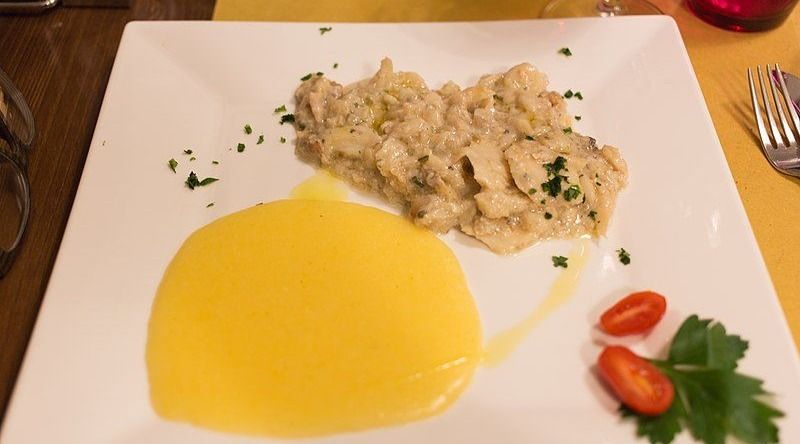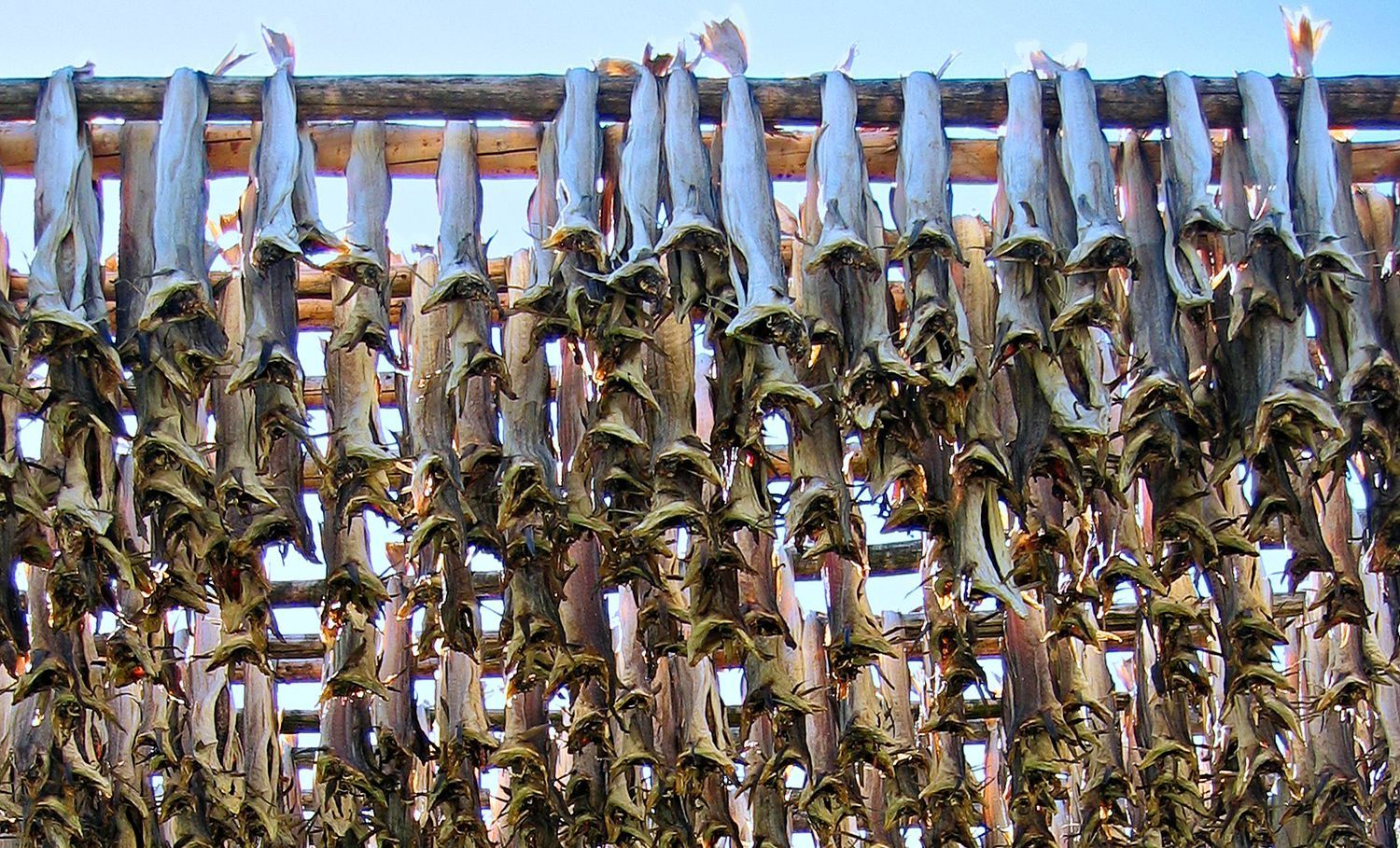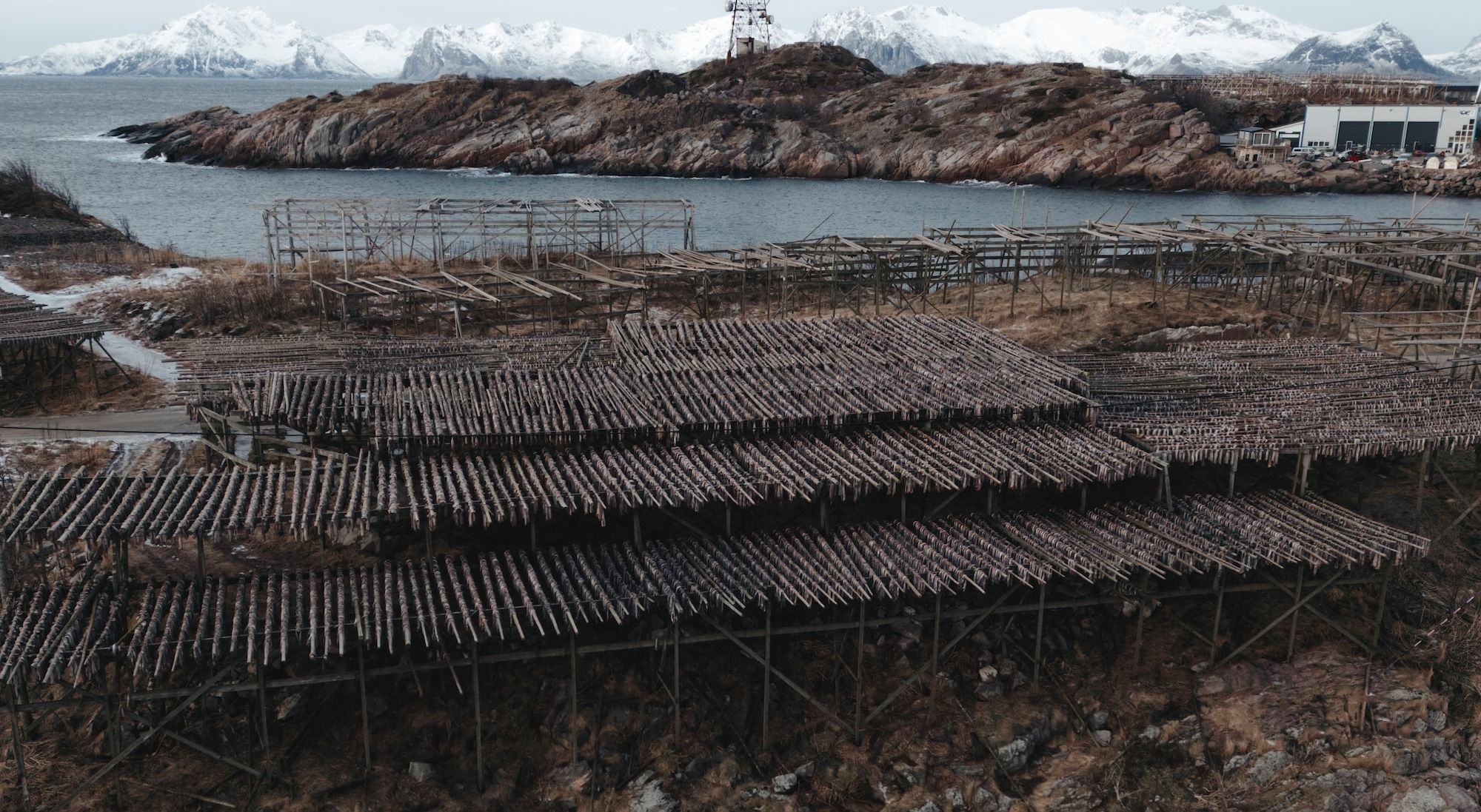What is Stockfish and Why Is It So Expensive?
Unlocking the Cost of Stockfish: Why Is It Priced High?

What is Stockfish?
Stockfish is a type of unsalted cod that's dried using natural elements like the sun, cold air, and wind, typically on specialized wooden frameworks. The aging process, which involves these elements, gives stockfish its unique texture and flavor. The name "stockfish" might have originated from these wooden structures or from the stick-like appearance of the dried fish.
The cost of this unique delicacy can reach $65 per kilogram, a price that is sevenfold higher than other popular fish in Nigeria, like croaker. The trade of stockfish with Nigeria plays a significant role in this aspect, underscoring its continued importance to the nation's economic wellbeing.
Before the discovery of oil and natural gas in Norway, the country's wealth was primarily built on the fishing industry. Today, fish exports remain a major contributor to Norway's economy, ranking as the second-highest earner.
The majority of quality-sorted stockfish finds its way to international destinations, with Italy, Croatia, U.S and Nigeria being the primary importers. Within the Nordic regions, including Norway and Iceland, this preserved fish is largely consumed as a snack or used in the preparation of a traditional dish known as lutefisk.
Meanwhile, in Italy, where it is referred to as "stoccafisso," the fish undergoes soaking and becomes a key ingredient in a variety of culinary creations. Renowned as a delicacy, it's a testament to the international appeal and adaptability of this unique food product.
How is Norway the Biggest Stockfish Contributor in The World?
The ideal conditions for creating stockfish occur annually between January and April in Norway. During this period, millions of cod journey from the Barents Sea to the fjords for breeding, and the weather is perfectly suited for natural drying.
The combination of cold, dry weather, and sunlight is essential for the process, all of which are found in this region. These unique conditions contribute to the distinct flavor of stockfish, making it Norway's largest export market for this particular fish.
The Norwegian stockfish has earned a distinguished place in the culinary traditions of Italy, reflecting both its appeal and versatility. Its integration into time-honored Italian dishes, such as baccalà alla vicentina from the historic region of Vicenza, not only underscores its exceptional taste but also represents a fusion of two cultures.

This culinary connection demonstrates the enduring relevance of stockfish, and how it continues to resonate with contemporary palates, embodying the culinary creativity and heritage of Italian gastronomy.
Italy stands as the most vital market for stockfish, where the demand for quality and variety is paramount. Regional preferences and culinary traditions shape these demands.
For instance, Northern Italians often opt for a leaner stockfish, while those in the South tend to prefer a more robust and fleshy variant. This demonstrates the broad appreciation for stockfish across Italy and highlights how local tastes influence the way it's utilized in cooking.
Why Is Stockfish so Expensive?

The process of creating stockfish is complex and specific to Norway, as it begins with:
1) Harvesting and Preparation
In Norway, the traditional method of preparing stockfish involves cleaning and gutting the fish, sorted by size and then hanging them in pairs by their tails on wooden slatted frames. These frames, a common sight on the island, allow the fish to dry naturally in the open air. Specialized operations ensure that the drying process maintains the quality and taste.
2) It Takes Three Months for Drying Process

The method of creating stockfish remains unchanged as the wooden "sticks" or frames used in the drying process. This typically begins in February with the opening of the season and continues until May.
The fish are hung near the sea, where they are exposed to the specific climate of the region. With temperatures hovering around freezing and the perfect blend of wind, sun, and rain, the environment is ideally suited for drying the fish. Any deviation from this can lead to a lower quality product.
To prevent spoilage from spring rains, the fish is then moved indoors to complete the drying.
By the middle of summer, the stockfish is fully cured.
It's this natural process that transforms the remarkable fish into the cherished, distinct, and flavorful delicacy known as stockfish.
3) Market Fluctuations
The balance of supply and demand, as well as the dependency on foreign production, can cause significant price volatility. The increase in prices can be attributed to various factors, one of which is the reduced fishing quotas yearly. This limitation leads to a smaller overall volume available for purchase, thereby driving up the cost.
Meanwhile the sellers in Nigeria have no direct influence over the drying process due to hot and humid climate or the amount available, leading to unpredictable supply chains.
In Italy, the escalating prices for stockfish are posing a problem. Italians, along with many others, are feeling the effects of reduced buying power, a trend that aligns with the country's high inflation rates. Eivind Hestvik Brækkan, a seafood analyst at the Norwegian Seafood Council, highlights this economic issue.
The increase in energy costs has led to more expensive operations in Norway, a factor that is reflected in the final market price of the product.
4) Stockfish was the Ideal Commodity
Lightweight and durable, with high nutritional value, stockfish can be preserved for three years without spoiling which greatly enhancing its value as a long-lasting resource. It can also be quickly rehydrated by soaking in water, adding to its practicality.
Stockfish holds a special place in Nigerian and Italian cuisine, and its unique flavor and texture contribute to its high demand. This cultural significance also plays a part in the high cost.
The Norwegian stockfish stands out as a remarkable source of nutrition, boasting protein levels that are unparalleled in other foods, constituting as much as 78.5 percent of its composition. Beyond protein, it is rich in essential nutrients like vitamin D, B12, and iron.
The purity and health benefits of this particular fish make it an exemplary choice, and it's fair to assert that Norwegian stockfish ranks among the healthiest and most uncontaminated fish available.
In conclusion, the journey of stockfish from Norway to many other countries involves a series of intricate steps, each adding to the final price. From the specialized drying process to the complexities of international trade, transportation, and market demand, the costs add up, explaining why stockfish is such an expensive delicacy.


